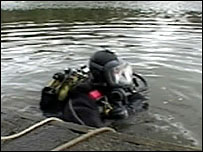UXO Deserves More Than A Footnote
Volusia County, Florida - Mosquito Lagoon Target area is a 121 acre area that was formerly used for Naval Air Operation training from 1945 to 1946. The property is currently owned by the NASA Kennedy Space Center and is managed by the National Park Service (NPS) and U.S. Fish and Wildlife Service (USFW). A former range and bombing target are recognized in the FUDS program and a Site Inspection (SI) effort was carried out in 2010 resulting in the discovery of munitions debris (i.e., evidence to indicate possible ordnance / UXO contamination).
The site is being tracked in the FUDS program so what's the problem? Well, we see a pretty significant one - The former ranges including a Rocket & Strafing Range and a Dive Bombing Target are not plotted / included on the NOAA charts for the area nor any NPS maps utilized by the public.
The discrepancy is evident in the image below (a larger .pdf version is available using the download link below) developed by UXOInfo.com which overlays the FUDS data with the current NOAA chart for the area.
The only indication of possible UXO in the area plotted by NOAA is a caution note which is over 8 miles away from the former ranges (i.e., note C). This note states - "Trawlers or other vessels should exercise caution while dragging the ocean floor within a 40 mile radius of Cape Canaveral, Florida since it is know that missile debris, some of which may contain UXO, exists in the area." The note is likely referring to the testing associated with NASA as it refers to an area 8-miles away.











